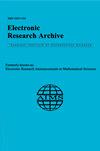Human-like car-following modeling based on online driving style recognition
IF 1.1
4区 数学
Q1 MATHEMATICS
引用次数: 1
Abstract
Incorporating human driving style into car-following modeling is critical for achieving higher levels of driving automation. By capturing the characteristics of human driving, it can lead to a more natural and seamless transition from human-driven to automated driving. A clustering approach is introduced that utilized principal component analysis (PCA) and k-means clustering algorithm to identify driving style types such as aggressive, moderate and conservative at the timestep level. Additionally, an online driving style recognition technique is developed based on the memory effect in driving behavior, allowing for real-time identification of a driver's driving style and enabling adaptive control in automated driving. Finally, the Intelligent Driver Model (IDM) has been improved through the incorporation of an online driving style recognition strategy into car-following modeling, resulting in a human-like IDM that emulates real-world driving behaviors. This enhancement has important implications for the field of automated driving, as it allows for greater accuracy and adaptability in modeling human driving behavior and may ultimately lead to more effective and seamless transitions between human-driven and automated driving modes. The results show that the time-step level driving style recognition method provides a more precise understanding of driving styles that accounts for both inter-driver heterogeneity and intra-driver variation. The proposed human-like IDM performs well in capturing driving style characteristics and reproducing driving behavior. The stability of this improved human-like IDM is also confirmed, indicating its reliability and effectiveness. Overall, the research suggests that the proposed model has promising performance and potential applications in the field of automated driving.基于在线驾驶风格识别的类人汽车跟随建模
将人类驾驶风格融入汽车跟随建模对于实现更高水平的驾驶自动化至关重要。通过捕捉人类驾驶的特征,它可以实现从人类驾驶到自动驾驶的更自然、更无缝的过渡。介绍了一种利用主成分分析(PCA)和k-means聚类算法在时间步长水平上识别侵略性、适度和保守驾驶风格类型的聚类方法。此外,基于驾驶行为的记忆效应,开发了一种在线驾驶风格识别技术,可以实时识别驾驶员的驾驶风格,实现自动驾驶的自适应控制。最后,通过将在线驾驶风格识别策略整合到汽车跟随建模中,改进了智能驾驶员模型(IDM),从而产生了模拟现实世界驾驶行为的类人IDM。这种增强对自动驾驶领域具有重要意义,因为它允许更高的准确性和适应性来建模人类驾驶行为,并可能最终导致人类驾驶和自动驾驶模式之间更有效和无缝的过渡。结果表明,时间步长级别驾驶风格识别方法可以更精确地理解驾驶员间异质性和驾驶员内部差异的驾驶风格。所提出的类人IDM在捕捉驾驶风格特征和再现驾驶行为方面表现良好。这种改进的类人IDM的稳定性也得到了证实,表明其可靠性和有效性。总体而言,研究表明该模型在自动驾驶领域具有良好的性能和潜在的应用前景。
本文章由计算机程序翻译,如有差异,请以英文原文为准。
求助全文
约1分钟内获得全文
求助全文

 求助内容:
求助内容: 应助结果提醒方式:
应助结果提醒方式:


